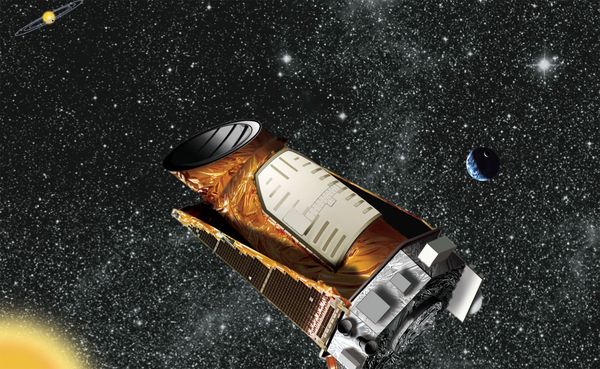"These discoveries show us that the scientific instruments are working well," said William Borocki of NASA's Ames Space Center in California. "The evidence is that Kepler will meet all the scientific goals we set before him"

The planets are named Kepler 4b, 5b, 6b, 7b and 8b, and were announced Monday, January 4 by members of the Kepler science team during a press briefing at the American Astronomical Society meeting in Washington.
"These discoveries show us that the scientific instruments are working well," said William Borocki of NASA's Ames Space Center in California. Boroki is the mission's lead researcher. "The evidence is that Kepler will meet all the scientific goals we set before him," he said.
All five planets are larger than Earth, and are of the type known as "hot Jupiters" due to their large mass and high temperature. The new planets range in size from about the size of Neptune to larger than Jupiter. They orbit their suns between 3.3 and 4.9 days. Estimated temperatures on their surface reach 1,000-1,300 degrees Celsius, hotter than molten lava and far too hot for life as we know it.
"It is very exciting to see Kepler's first discoveries coming off the assembly line," says John Morse, Director of the Astrophysics Division at NASA Headquarters in Washington. "We expected that hot Jupiters would be the first that Kepler could detect. It's only a matter of time before more Kepler observations lead to minor planets with longer orbits, and we're getting closer and closer to Earth's first twin."
The Kepler space telescope was launched on March 6, 2009 from Cape Canaveral and is supposed to simultaneously observe more than 150 stars. Kepler's scientific instruments - mainly photometers - have already measured hundreds of signatures of planets and these data are now being studied.
Kepler searches for the planets using the eclipse method - the dimming rate of the star's light when the planet passes in front of it as seen from Earth. The blocking of the starlight is done periodically. The size of the planet can be measured by measuring the dimming intensity. The heat measurements can be estimated according to the characteristics of the planet and the duration of its orbit around the star.
While many of the signatures so far are almost certainly something other than a planet, such as small stars orbiting larger stars, ground-based observations have confirmed the existence of these five planets. The discovery is based on the collection of data from six weeks of observation since the telescope's scientific activity began on May 12, 2009
For information on the NASA website
More on the subject on the science website

7 תגובות
The great enigma is the universe. And yet what is more amazing?
The universe is transparent! You can look at everything from its creation!
All the celestial bodies are moving away from each other. And accelerate! as if someone
Increases pressure on the gas pedal for 15 billion years!!!
And a little respect for the earth:
Life on Earth is a marginal and negligible event of the universe!!
Shimmy
In order to locate a planet, you need to detect (at least) twice a transit of the planet between us and the sun it orbits. Therefore, in order to discover an "Earth" twin, we will have to wait another year or so until it is possible to discover planets in the "living zone".
It is possible that Kepler will be able to discover small planets in orbits close to their suns. Such planets (if they exist) can be discovered within a few months.
Why not call Neptune by his Hebrew name Rahab?
Very happy news. Good luck to them
Those who say that they are close to discovering a twin of the earth, what time period are they talking about? Months? Years? Decade?
Well done, I hope they manage to find a planet similar to Earth soon.
exciting. Just maybe you should correct the title, because when I saw it I rubbed my eyes in amazement...
Great